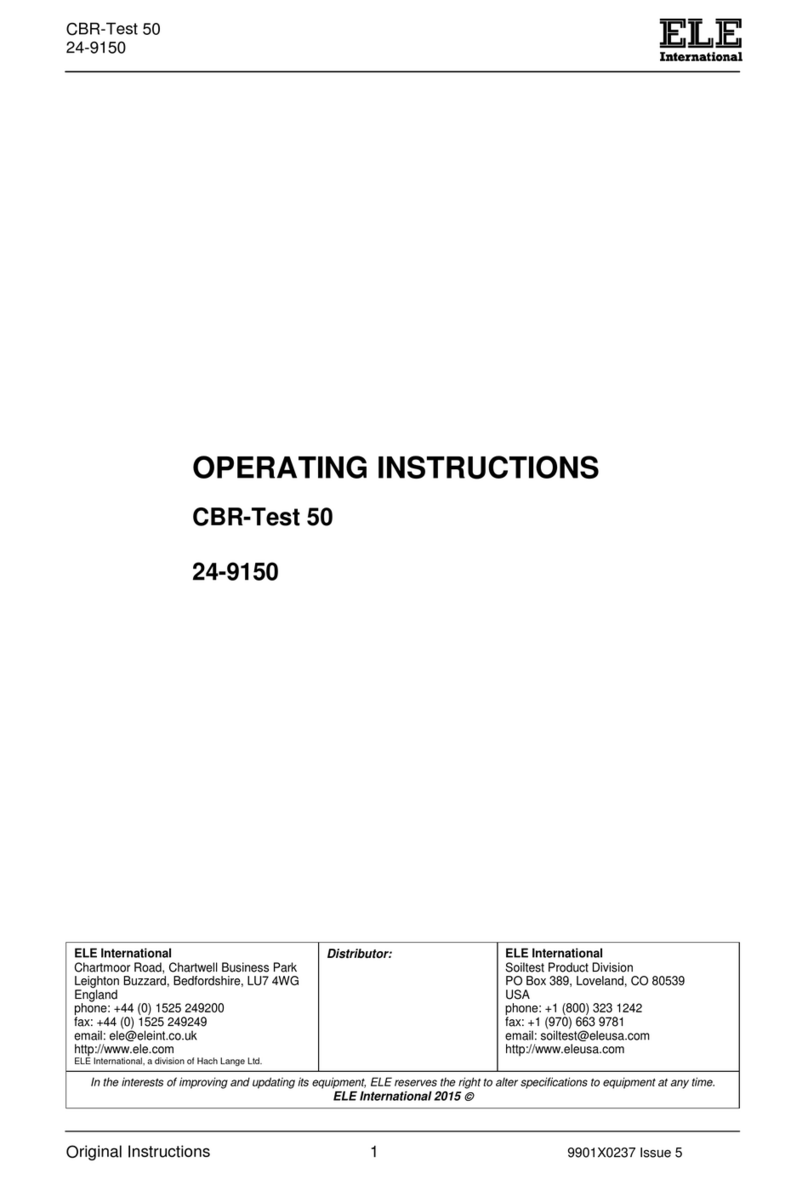
SoilTest PRO Auto Soils Consolidator (ASC)
25-0500
Original Instructions 4 9901X0275 Issue 2
Read all labels and tags attached to the instrument. Personal injury or damage to the
instrument could occur if not observed. A symbol on the instrument is referenced in the
manual with a precautionary statement.
This symbol, if noted on the instrument, references the instruction manual for
operation and/or safety information.
1.3 EU Radio Interference and Immunity Regulation
Supporting test records reside with the manufacturer.
The equipment has been tested and found to comply with the following standards.
EN61326-1:2013 Electrical equipment for measurement, control and laboratory use - EMC
requirements - Part 1: General requirements, Group 1, Class A equipment (emissions only)
and Industrial Environment (immunity section only).
EN55011:2009 (+A1) Limits and methods of measurement of radio disturbance
characteristics of industrial, scientific and medical (ISM) radio-frequency equipment, Group 1
Class A equipment.
EN61326-1:2013 Electrical equipment for measurement, control and laboratory use -
EMC requirements - Part 1: General requirements.
Basic Environment – (immunity section only).
EN61000-3-2:2014 Electromagnetic compatibility (EMC) - Part 3-2: Limits - Limits for
harmonic current emissions (equipment input current <=16A per phase).
EN61000-3-3:2013 Electromagnetic compatibility (EMC) - Part 3-3: Limits - Limitation of
voltage changes, voltage fluctuations and flicker in public low-voltage supply systems, for
equipment with rated current <16A per phase and not subject to conditional connection.
EN55032:2012 Electromagnetic compatibility of Multimedia Equipment - Emission
Requirements. Class A Emissions.
1.4 Other Certification
Canadian Radio Interference-Causing Equipment Regulation, IECS-003, Class A:
Supporting test records reside with the manufacturer.
This Class A digital apparatus meets all requirements of the Canadian Interference-
Causing Equipment Regulations.
FCC Part 15, Class "A" Limits.
Supporting test records reside with the manufacturer. The device complies with Part
15 of the FCC Rules. Operation is subject to the following conditions:
a. The equipment may not cause harmful interference.
b. The equipment must accept any interference received, including interference that
may cause undesired operation.
Changes or modifications to this equipment not expressly approved by the party
responsible for compliance could void the user's authority to operate the equipment.
This equipment has been tested and found to comply with the limits for a Class A
digital device, pursuant to Part 15 of the FCC rules. These limits are designed to
provide reasonable protection against harmful interference when the equipment is
operated in a commercial environment. This equipment generates, uses and can
radiate radio frequency energy and, if not installed and used in accordance with the
instruction manual, may cause harmful interference to radio communications.




























